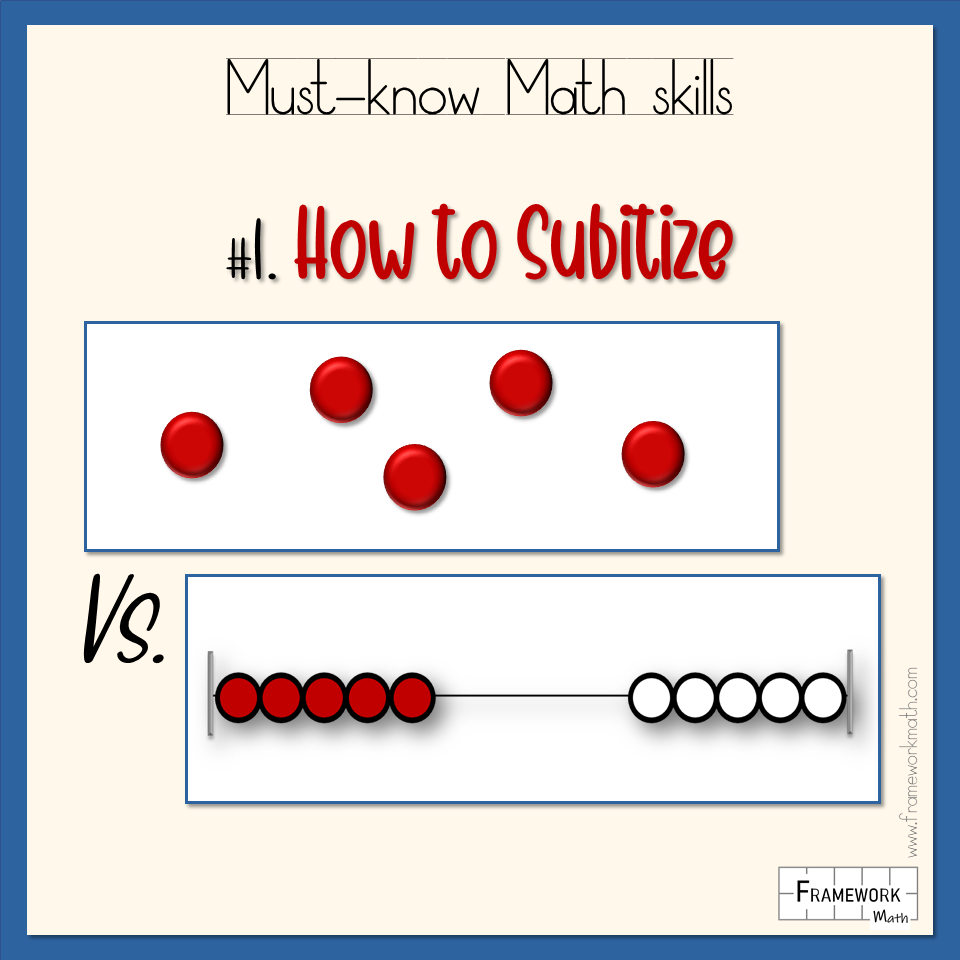What does “subitize” mean, and why is it so important?
Whether you're working with 5 or 55 year-olds, the fundamental Math skills in this #numbersenseseries will help them develop a solid, intuitive sense of how numbers work.
This number sense lays the foundation for mastery in addition, subtraction, multiplication, and division ... from the single-digit facts through multi-digit operations.
Skill #1: Subitizing is the ability to instantly recognize an amount of objects without counting.
When students build (compose) numbers on a Rekenrek, they learn to see them in their place value settings, with sub-groups of 5's highlighted within the groups of 10's.
Since every number can be decomposed into groups of 10 (with ten 10's being 100, etc.), and the sub-groups always being 5 or less, this makes EVERY NUMBER subitizable when you build it on a Rekenrek.
(With larger numbers we can use place value ten frames, but we'll get to that later.)
This is a vital skill for students to develop because it helps them move beyond counting into a fantastic world where they can SEE numbers and re-arrange them as needed to solve Math mysteries.
(We won't call them "problems" on my watch. ;) )
Re-arranging numbers into these groups of 5's and 10's (50's and 100's, etc.) IS the delightful game of Math (also referred to less affectionately as arithmetic.)
Follow us on Facebook (page or group) or browse the blog posts here for more quick tips on using a Rekenrek to help your learners build a conceptual understanding of Math, rather than simply memorize Math facts and procedures — and feel free to share if you find these helpful!
Quick Practice:
Find a Rekenrek.
You can buy one, build one, or use a free online version. See suggestions here.
Help your learner build numbers 1 - 10 on a Rekenrek.
Start with all beads on the right. Slide beads to the left as you use them.
Once they are comfortable building numbers, show them a number from 1 through 10 and see if they can instantly recognize how many beads there are without counting.
Ask: Do you think it’s easier to count 8 beads if they are scattered on the table or lined up in a row on a Rekenrek. Why?
Ask: Why do you think the colors are split in the middle? Where else do the colors change? Why do you think that is helpful?

